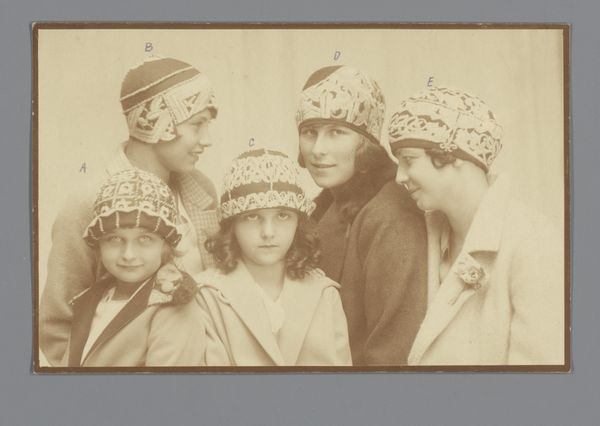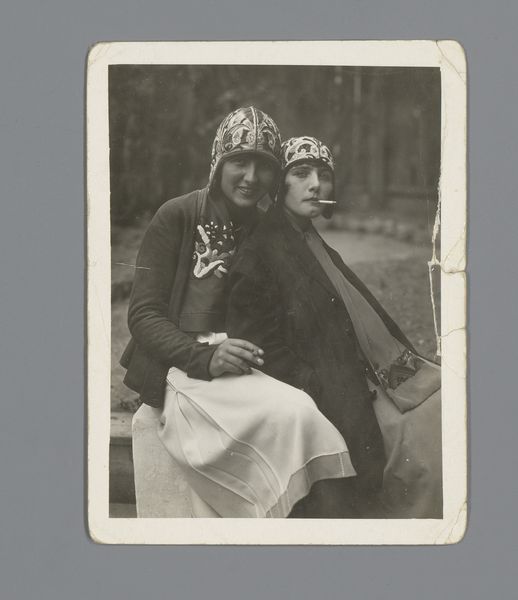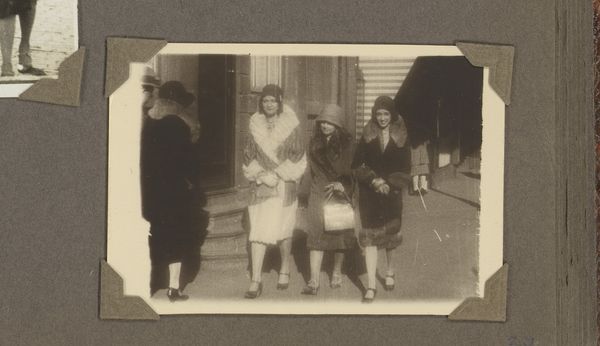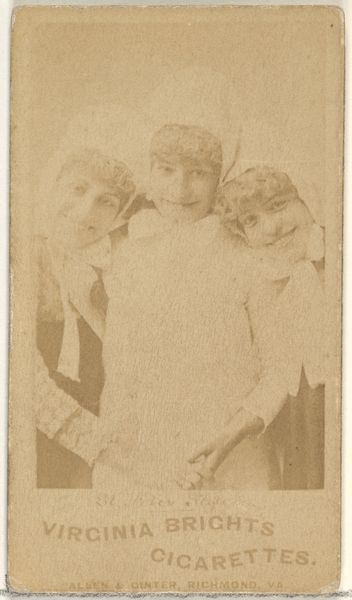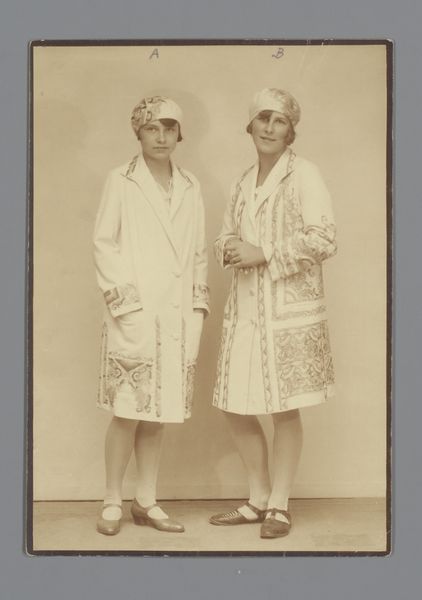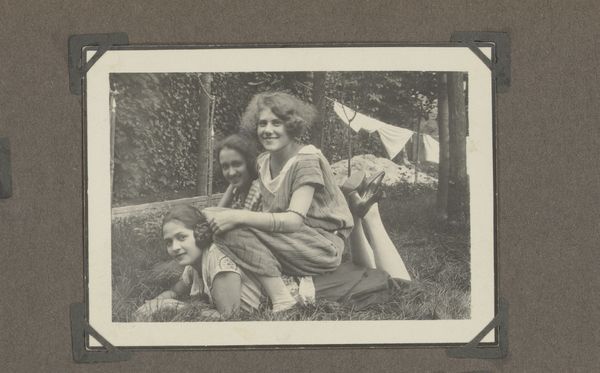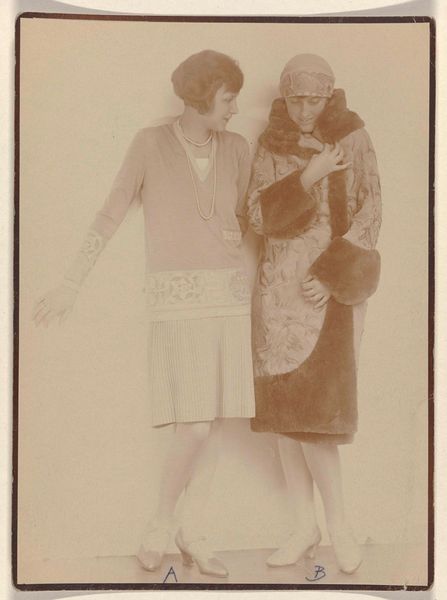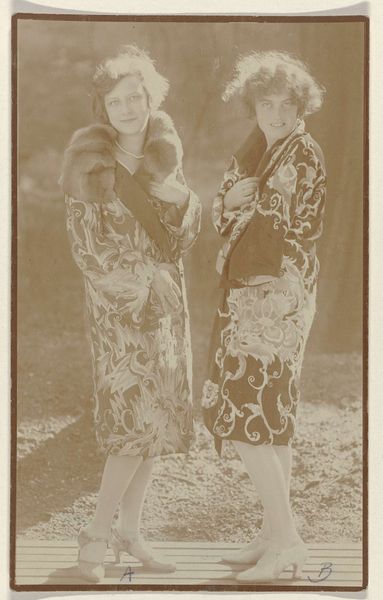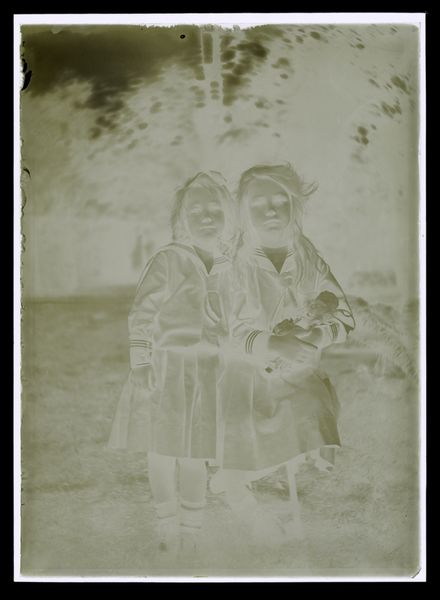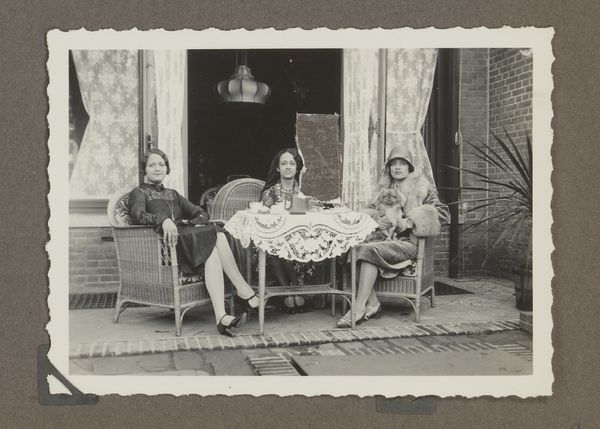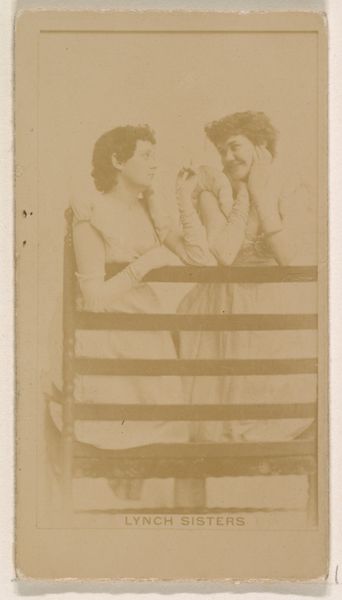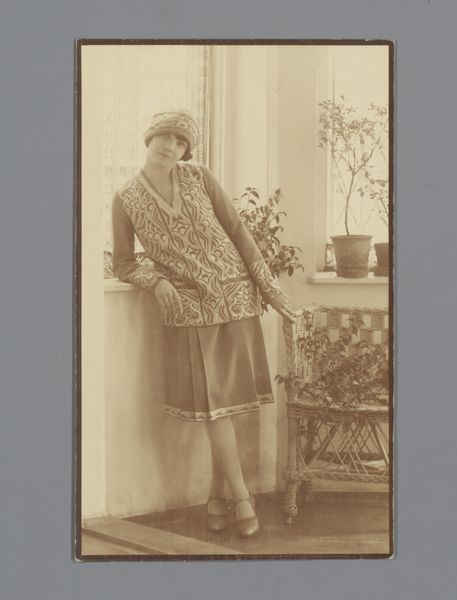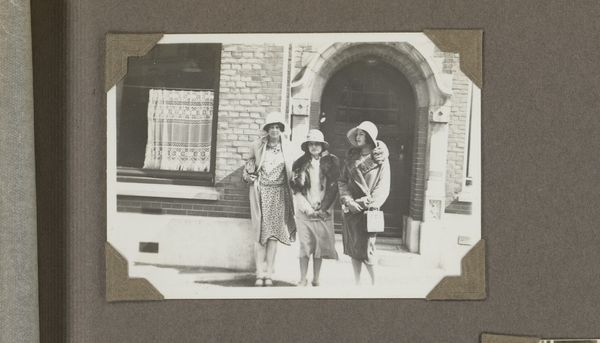
Drie modellen met geborduurde jurken, sjaals, mantels en mutsen van de Wiener Werkstätte 1920 - 1930
0:00
0:00
Dimensions: height 108 mm, width 144 mm
Copyright: Rijks Museum: Open Domain
Curator: This photograph, currently residing here at the Rijksmuseum, showcases "Three Models Wearing Embroidered Dresses, Shawls, Coats and Hats from the Wiener Werkstätte." Its creation falls roughly between 1920 and 1930. Editor: The image, bathed in sepia tones, initially whispers of gentle melancholy to me. The models, seemingly captured mid-pose, create a feeling of almost vulnerable stillness. Curator: Those clothes! The Wiener Werkstätte was, of course, about so much more than mere fashion. Each stitch, each embellishment tells a story of artistic intention. Look at the geometry interwoven with floral motifs, hinting at a fusion of the modern and the timeless feminine ideals. The weight of the materials clearly contributes to their presentation as art pieces. Editor: Absolutely, the texture seems palpable even through this photographic filter. And I am struck by the artistry implicit in these embroidered works, each knot and loop representative of unheralded craftswomen—a potent symbol of labor that brought beauty into being and also helped challenge the traditional boundaries of domestic work versus studio artwork. Curator: The models themselves seem to embody a certain spirit, their gaze carrying an echo of hope. It is interesting that it seems posed with great awareness, as it feels more staged and constructed rather than truly candid or naturalistic, yet they almost break this impression due to the faintness of the smiles on their faces. The caps almost remind me of halos, albeit subdued. Perhaps signaling purity but also vulnerability? Editor: Yes! Purity as labor, I suppose—and labor as a mode of social distinction in the 1920s-1930s, not that far removed from when photography developed more thoroughly as a mass phenomenon of capturing images and promoting commodity consumption. Think about it—the photograph is a document of clothes, clothes are signifiers of material and means of production and class aspirations. Curator: That interplay, that push-and-pull between image and industry... that is where the soul of art often reveals itself. The Wiener Werkstätte has proven to be just a blip in the fashion world, yet its symbolism, through an image such as this, lives on as a testament to craftsmanship and creativity. Editor: And to labor’s central role, always implicated. Thanks for pointing this out to me. I have gained new admiration for all that is communicated and revealed.
Comments
No comments
Be the first to comment and join the conversation on the ultimate creative platform.
